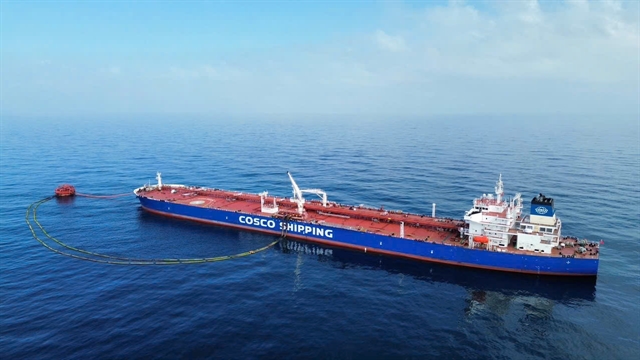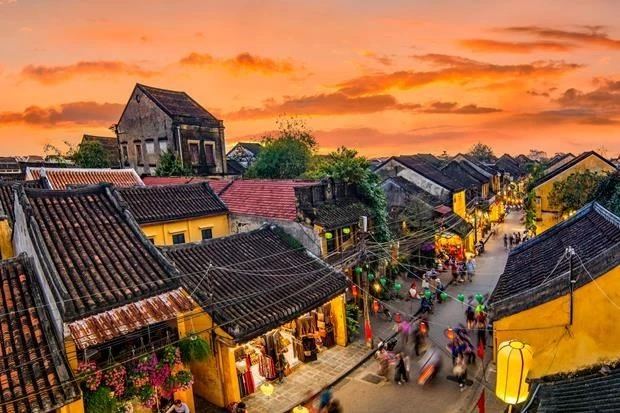 Life & Style
Life & Style

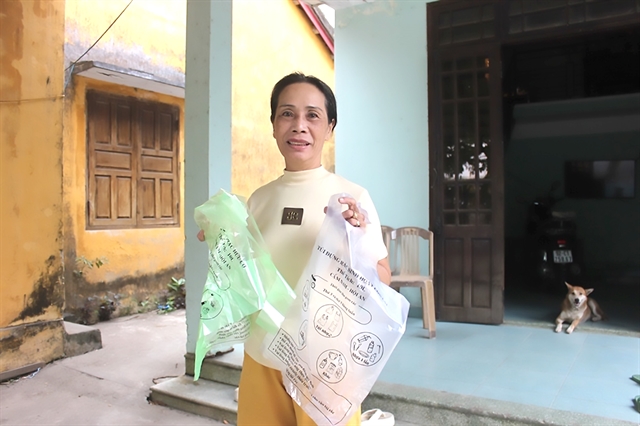 |
| A woman in Cẩm An Ward in Hội An City shows the different waste bags she uses. The city has piloted a new waste collection project as part of a push to make the city that first 'zero waste' site in Việt Nam. — Photo courtesy of Trần Lan Anh |
HỘI AN — Hội An ancient town has piloted the first ever combined waste collection and treatment fee to reduce the volume of waste thrown away by households each day – a crucial step to recognition of an eco-city, sustainable tourism and circular economy – in operation since the middle of 2023.
Instead of paying a monthly waste cost of VNĐ30,000 (US$1.18), each household in Hội An splits their waste into different types, promoting waste classification at source, leaving the minimum waste being sent to landfill.
Each family in Cẩm An ward – a coastal living quarter, 3km away from the Old Quarter of Hội An – buys a waste bag, either ten or twenty litres volume, at a cost of between VNĐ1,900 to VNĐ7,500.
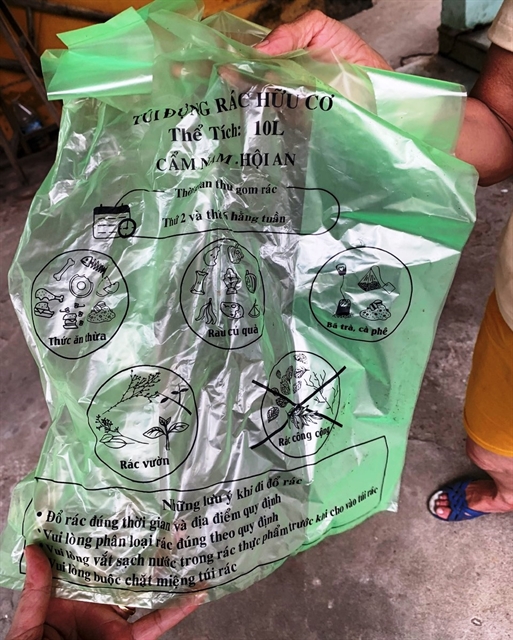 |
| Waste bags are designed for waste sorting out at family in Hội An City. About 450 households have joined a pilot scheme, paying only what rubbish is actually collected. Photo courtesy of Lan Anh |
The families are then encouraged to sort waste into what can be recycled or reused and what absolutely has to be thrown away.
“The solution will help reduce at least 30 per cent of waste going to the dump each day, while households will save much from recycle and reusable waste from sorting-out at home,” said vice chairman of Hội An People’s Committee, Nguyễn Thế Hùng.
“Families will gradually get used to classifying waste– kitchen waste for composting, what they can recycle and reuse - and leave only solid waste for processing at the dump or landfill.”
He said the pilot is also fairer since families only pay for the waste they get rid of and bigger businesses pay more, so it boosts waste-to-natural resources and circular economy.
“It means a three-member family only collects waste every three day, after sorting it out at home, while a family-run business or restaurant will have to pay VNĐ60,000 for the volume of waste they create,” he said.
The pilot is currently underway at 450 households in Cẩm An ward, but it is being rolled out to all households in the city in the near future.
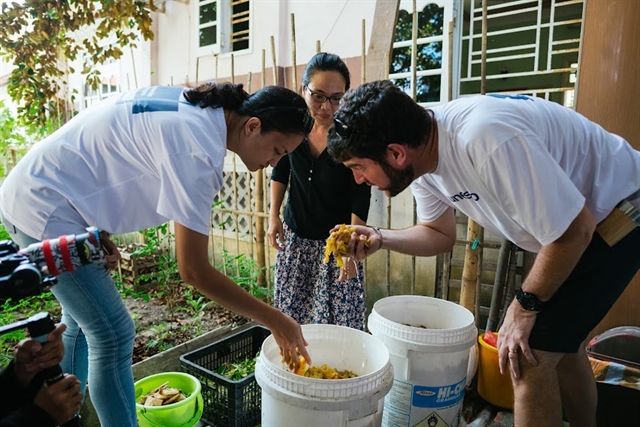 |
| Visitors check a kitchen waste processing family in Hội An. About 60 per cent of Hội An's population is aware of the need to sort waste at source and why the environment needs protection from waste pollution. Photo courtesy of Vũ Thị Mỹ Hạnh |
Different environment-friendly waste collection model projects have been implemented at two communes – Cẩm Thanh Commune in Hội An City and Tân Hiệp Commune on the Chàm Islands, off the coast of Hội An – both encouraging waste classification and recycling, plastic waste reduction and composting among the community.
Nguyễn Thị Như Ý, a resident in Cẩm An, said her family are now reusing plastic bottles and oil containers, rather than throwing them away, while kitchen waste can be composted as organic fertiliser for bonsai or garden plants.
“Each family member know how to reduce the amount of waste each day, by saving reusable and recyclable waste. It also helps use limit energy for cooking with well-organised food consumption or avoid left-over food or over-use,” she said.
“We now pay only half the waste cost than we once did, by sorting out each day.”
Nguyễn Thanh Sơn, from the city’s nature and environment division, said at least 60 per cent of the population in the ancient city is aware of waste classification and was already sorting out their rubbish, since the launch of the city-wide ‘3Rs’ (Reduce, Reuse, Recycle) campaign in 2011.
The city is now using the data collected from this and a waste audit from the pilot project, which can be used across the whole urban area.
 |
| An engineer checks a kitchen waste compost machine at a resort in Hội An. About 100 hotels, resorts in Hội An are now committed to reducing waste on the way to making Hội An a 'zerowaste' destination. VNS Photo Công Thành |
A report from Hội An City’s urban environment unit revealed that the city produces 120 tonnes of garbage each day, of which 30 per cent is recycled or classified, while a local incinerator can only process 50 tonnes each day.
It reported that a third of the city's daily waste came from tourists and poor waste treatment technology has left Cẩm Hà rubbish dumps overloaded.
Hội An City’s tourism association has launched a new 5-R drive – refuse, reduce, recycle, refill and re-use - to try and reform the waste business and for consumers to seek out alternatives to packaging, for instance using glass bottles – to move towards it becoming the first ‘zero waste’ site in Việt Nam.
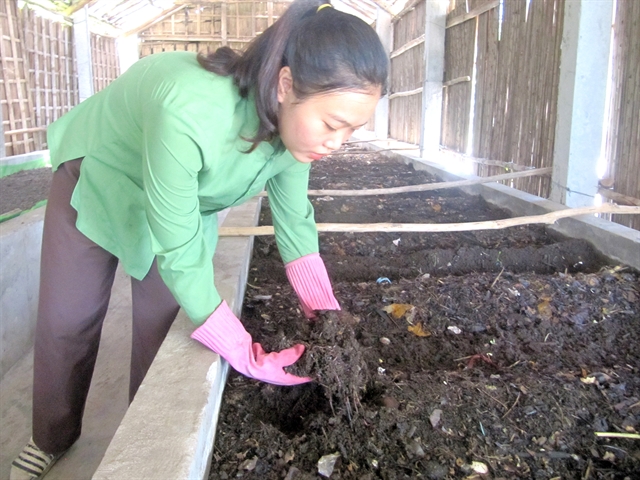 |
| A staff mixes kitchen waste compost site in Cẩm Châu Commune of Hội An City. Kitchen waste has been used as organic fertiliser for bonsai and vegetable garden in the suburban area of Hội An. VNS Photo Công Thành |
Communities in Cẩm Kim, An Mỹ, Triêm Tây villages and Trà Quế vegetable village have also been building chemical-free fertilisers and zero-waste agro-tourism garden zones.
Hội An and the Chàm Islands have been receiving support and cooperation from the International Union for the Conservation of Nature (IUCN) and the World Wildlife Fund (WWF), USAID and the Global Alliance for Incinerator Alternatives (GAIA) to help them reach their zero waste, zero plastic goals. — VNS


